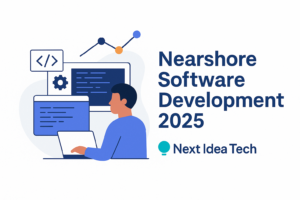
In today’s hyper-connected world, data is often referred to as the “new oil”—a valuable resource that, when refined and utilized effectively, can power innovation, drive decision-making, and create a significant competitive advantage. Consider this: according to projections from IDC, by 2025, the global datasphere is expected to reach a massive if 175 Zettabytes, a testament to the unprecedented volume of information generated daily from sources ranging from social media and IoT devices to transactional systems and beyond. Yet, despite this data deluge, a recent report by KPMG reveals that U.S. companies are lagging behind their global peers in embedding data and analytics practices. Significant gaps exist in areas such as data science, data accessibility, and data monetization, indicating opportunities for businesses to strengthen data governance, culture, and overall effectiveness in utilizing data assets. This gap between data potential and realized value underscores a critical challenge for modern organizations: how to harness the power of big data to achieve strategic goals.
Hire the best developers in Latin America. Get a free quote today!
Contact Us Today!For IT decision-makers and C-suite executives, the stakes have never been higher. In an era where data-driven companies like Amazon, Netflix, and Google dominate their respective industries, the ability to collect, analyze, and act on data is no longer a luxury—it’s a necessity. Organizations that fail to develop a comprehensive big data strategy risk falling behind, not only in terms of profitability but also in their ability to innovate, adapt, and meet evolving customer expectations.
But what exactly is a big data strategy, and why does it matter? And how do you build one? Discover the essential steps to create a robust data strategy that places data at the heart of your organization’s future.
This comprehensive guide will help you establish the structure you need to develop an effective data-led strategy.
Whether you’re starting from scratch or refining an existing approach, we’ll walk you through the key components of a successful strategy and actionable steps to ensure your organization remains competitive in an increasingly data-driven world. By the end of this piece, you’ll have a clear roadmap for transforming your data into a strategic asset—one that fuels innovation, informs decision-making, and positions your organization for long-term success.
What is a Big Data Strategy?
In the simplest terms, a big data strategy is a comprehensive plan that outlines how an organization will collect, store, process, analyze, and leverage its data to achieve specific business objectives. It serves as a blueprint for transforming raw data into actionable insights, enabling organizations to make informed decisions, optimize operations, and drive innovation. However, a big data strategy is more than just a technical roadmap—it’s a business imperative that aligns data initiatives with organizational goals, ensuring that every byte of data contributes to measurable outcomes.
A well-crafted and executed big data strategy not only enables organizations to unlock the full potential of their data but also ensures that data initiatives align with broader business goals, driving measurable outcomes such as increased revenue, reduced costs, and enhanced customer experiences.
The Core Components of a Big Data Strategy
A robust big data strategy is built on several interconnected components, each playing a critical role in the data lifecycle. These components include:
1. Data Collection and Integration
The foundation of any big data strategy lies in the ability to gather data from diverse sources, both internal (e.g., CRM systems, ERP platforms) and external (e.g., social media, IoT devices, third-party APIs).
Effective integration ensures that data from disparate sources is consolidated into a unified format, eliminating silos and enabling a holistic view of the organization’s operations.
2. Data Storage and Infrastructure
With the volume of data growing exponentially, organizations need scalable and cost-effective storage solutions. This often involves a combination of on-premise, cloud, or hybrid infrastructures.
Technologies like Hadoop, data lakes, and cloud platforms (e.g., AWS, Azure, Google Cloud) are commonly used to store and manage large datasets.
3. Data Processing and Analytics
Once data is collected and stored, it must be processed and analyzed to extract meaningful insights. This involves using tools and techniques such as machine learning, artificial intelligence, and predictive modeling.
Advanced analytics enable organizations to identify patterns, predict trends, and make data-driven decisions in real time.
4. Strong Data Governance and Security
As data becomes a critical asset, ensuring its quality, accuracy, and security is paramount. Data governance frameworks establish policies and procedures for data management, compliance, and privacy.
Security measures, such as encryption, access controls, and regular audits, protect sensitive information from breaches and cyber threats.
5. Data-Driven Decision-Making and Innovation
The ultimate goal of a big data strategy is to empower decision-makers with actionable insights. This requires not only advanced analytics but also a cultural shift toward data-driven thinking.
By embedding data into every aspect of the organization, from marketing and sales to supply chain and customer service, businesses can unlock new opportunities for innovation and growth.
Why a Big Data Strategy Matters
The importance of a big data strategy cannot be overstated. In today’s competitive landscape, organizations that fail to harness the power of data risk falling behind in several key areas:
- Missed Opportunities: Without a clear strategy, valuable insights may remain hidden in unstructured or siloed data, preventing organizations from identifying new revenue streams or optimizing existing processes.
- Inefficiencies: Poor data management can lead to redundant efforts, wasted resources, and operational bottlenecks.
- Security Risks: Inadequate data governance and security measures can expose organizations to breaches, regulatory penalties, and reputational damage.
Conversely, organizations that invest in a well-defined big data strategy reap significant rewards. For example:
- Netflix uses big data to personalize content recommendations, resulting in higher customer satisfaction and retention.
- Walmart leverages big data analytics to optimize its supply chain, reducing costs and improving efficiency.
- American Express employs predictive analytics to detect fraudulent transactions in real time, saving millions of dollars annually.
These examples illustrate how a big data strategy can transform data into a strategic asset, driving tangible business outcomes and creating a sustainable competitive advantage.
The Business Case for a Big Data Strategy
In an era where data is often described as the lifeblood of modern enterprises, the question is no longer whether organizations should invest in big data—it’s how quickly they can do so. A well-crafted big data strategy is not just a technical initiative; it’s a strategic enabler that drives measurable business outcomes. From boosting profitability to enhancing customer experiences, the benefits of a big data strategy are both profound and far-reaching.
Here’s why IT leaders, Chief Data Officers (CDOs), and other senior executives must prioritize building a robust big data strategy.
1. Driving Revenue Growth and ROI
One of the most compelling reasons to invest in a big data strategy is its ability to deliver a significant return on investment (ROI). By leveraging data analytics, organizations can uncover new revenue streams, optimize pricing strategies, and improve customer targeting. For example:
- E-commerce companies like Amazon use big data to recommend products to customers, driving higher conversion rates and average order values.
- Financial institutions leverage predictive analytics to identify cross-selling and upselling opportunities, increasing customer lifetime value.
According to a study by McKinsey, data-driven organizations are 23 times more likely to acquire customers, 6 times more likely to retain them, and 19 times more likely to be profitable. These statistics underscore the direct link between data-driven decision-making and financial performance.
2. Gaining a Competitive Advantage
In today’s fast-paced business environment, staying ahead of the competition requires more than just intuition—it demands actionable insights derived from data. A big data strategy enables organizations to:
- Identify Market Trends: By analyzing large datasets, businesses can spot emerging trends and capitalize on them before competitors do.
- Enhance Customer Experiences: Personalization is no longer a luxury; it’s an expectation. Big data allows organizations to tailor products, services, and marketing messages to individual preferences, fostering loyalty and satisfaction.
- Optimize Operations: From supply chain management to inventory forecasting, big data analytics can streamline processes, reduce waste, and improve efficiency.
For instance, Netflix uses big data to not only recommend content but also to inform its content creation strategy, ensuring that its offerings resonate with viewers. Similarly, UPS employs predictive analytics to optimize delivery routes, saving millions of dollars in fuel costs annually.
3. Mitigating Risks and Ensuring Compliance
In an increasingly regulated world, data governance and security are critical components of a big data strategy. Organizations that fail to protect their data risk facing severe consequences, including financial penalties, reputational damage, and loss of customer trust. A robust big data strategy helps mitigate these risks by:
- Detecting Fraud: Advanced analytics can identify unusual patterns or anomalies in real time, enabling organizations to respond swiftly to potential threats.
- Ensuring Compliance: With regulations like GDPR, CCPA, and HIPAA, organizations must adhere to strict data privacy and security standards. A big data strategy ensures that data is collected, stored, and processed in compliance with these regulations.
- Proactive Risk Management: By analyzing historical data and external factors, organizations can anticipate risks and take preventive measures.
4. Aligning Data Initiatives with Business Goals
A big data strategy is not an end in itself; it’s a means to achieve broader business objectives. Whether the goal is to increase market share, improve operational efficiency, or enhance customer satisfaction, a well-defined strategy ensures that data initiatives are aligned with the organization’s mission and vision. This alignment is critical for:
- Securing Executive Buy-In: When data initiatives are tied to tangible business outcomes, it becomes easier to secure funding and support from leadership.
- Driving Cross-Functional Collaboration: A big data strategy fosters collaboration between IT, business units, and leadership, breaking down silos and ensuring that data is used to its full potential.
- Measuring Success: By defining clear KPIs and metrics, organizations can track the impact of their data initiatives and make data-driven adjustments as needed.
The business case for a big data strategy is clear: it’s not just about managing data—it’s about leveraging data to drive growth, innovation, and resilience. For IT leaders and C-suite executives, the question is no longer whether to invest in a big data strategy, but how to implement one effectively.
In the following sections, we’ll explore the steps to building a successful big data strategy, common challenges to avoid, and the role of IT staff augmentation in accelerating your data journey.
How to Build a Big Data Strategy
Building a big data strategy is not a one-size-fits-all process. It requires careful planning, collaboration, and a clear understanding of your organization’s unique needs and goals. Below is a step-by-step guide to help you navigate this complex but rewarding journey.
Step 1: Define Objectives and Key Use Cases
The first step in building a big data strategy is to define what you want to achieve. Without clear objectives, your data initiatives risk becoming disjointed and ineffective. Start by asking:
- What are the key business problems we want to solve?
- What opportunities can we unlock with data?
- How will data drive value for our organization?
Actionable Tips:
- Engage stakeholders from across the organization to identify high-impact use cases. For example, marketing teams might focus on customer segmentation, while operations teams might prioritize predictive maintenance.
- Prioritize use cases based on their potential impact and feasibility. Start with quick wins to build momentum and demonstrate value.
For instance, a retail company might prioritize use cases like personalized marketing, inventory optimization, and fraud detection.
Step 2: Assess Your Current Data Capabilities
Before investing in new technologies or tools, it’s essential to understand your organization’s current data landscape. This involves conducting a comprehensive assessment of your data assets, infrastructure, and talent.
Key Areas to Evaluate:
- Data Quality: Is your data accurate, complete, and consistent?
- Data Accessibility: Can employees easily access the data they need?
- Infrastructure: Do you have the right tools and platforms to store and process large datasets?
- Talent: Do you have the necessary skills in-house, or will you need to hire or train employees?
Actionable Tips:
- Use data auditing tools to identify gaps and redundancies in your data ecosystem.
- Create a data inventory to catalog all available data sources and their characteristics.
Step 3: Build the Right Infrastructure
Your data infrastructure is the backbone of your big data strategy. It must be scalable, secure, and capable of handling the volume, velocity, and variety of your data.
Options to Consider:
- On-Premise Solutions: Ideal for organizations with strict data privacy requirements.
- Cloud-Based Solutions: Offer scalability, flexibility, and cost-effectiveness. Popular platforms include AWS, Azure, and Google Cloud.
- Hybrid Solutions: Combine the best of both worlds (On-Premise and Cloud), allowing organizations to balance security and scalability.
Actionable Tips:
- Choose technologies that align with your use cases and long-term goals. For example, Hadoop is well-suited for batch processing, while Apache Spark excels at real-time analytics.
- Ensure your infrastructure supports data integration, enabling seamless connectivity between disparate systems.
Step 4: Establish Data Governance and Security
Data governance is the framework that ensures your data is accurate, consistent, and secure. It encompasses policies, processes, and tools for managing data quality, compliance, and access.
Key Components of Data Governance:
- Data Quality Management: Implement processes to clean, validate, and standardize data.
- Compliance: Ensure your data practices adhere to regulations like GDPR, CCPA, and HIPAA.
- Access Controls: Define who can access what data and under what circumstances.
Actionable Tips:
- Appoint a data governance committee to oversee policies and resolve disputes.
- Use tools like data catalogs and metadata management systems to track data lineage and usage.
Step 5: Develop Analytics Capabilities
The true value of big data lies in its ability to generate actionable insights. To unlock this potential, organizations must invest in advanced analytics capabilities, including:
- Descriptive Analytics: Summarize historical data to understand what happened.
- Predictive Analytics: Use statistical models and machine learning to forecast future outcomes.
- Prescriptive Analytics: Recommend actions based on data-driven insights.
Actionable Tips:
- Build a team of data scientists, engineers, and analysts, or partner with an nearshore IT staff augmentation firm to fill skill gaps.
- Leverage tools like Tableau, Power BI, or Python libraries (e.g., Pandas, Scikit-learn) to analyze and visualize data.
Step 6: Foster a Data-Driven Culture
Technology alone is not enough to ensure the success of your big data strategy. Organizations must also cultivate a data-driven culture where employees at all levels understand the value of data and are empowered to use it in their decision-making.
How to Foster a Data-Driven Culture:
- Training and Education: Provide employees with the skills and knowledge they need to work with data.
- Leadership Support: Ensure executives champion data initiatives and lead by example.
- Collaboration: Break down silos by encouraging cross-functional teams to share data and insights.
Actionable Tips:
- Launch data literacy programs to improve employees’ understanding of data concepts and tools.
- Recognize and reward teams that successfully leverage data to achieve business outcomes.
Step 7: Monitor, Measure, and Iterate
A big data strategy is not a one-time project—it’s an ongoing process that requires continuous monitoring and refinement.
Key Steps:
- Define KPIs: Establish metrics to track the success of your data initiatives, such as ROI, data accuracy, and user adoption.
- Monitor Progress: Use dashboards and reports to assess performance and identify areas for improvement.
- Iterate and Improve: Regularly review your strategy and make adjustments based on feedback and changing business needs.
Actionable Tips:
- Conduct periodic reviews with stakeholders to ensure alignment with business goals.
- Stay informed about emerging trends and technologies to keep your strategy relevant.
Real-World Example: How a Global Retailer Built a Big Data Strategy
A leading global retailer wanted to enhance its customer experience and optimize its supply chain. Here’s how they built their big data strategy:
- Defined Objectives: Focused on personalized marketing and inventory optimization.
- Assessed Capabilities: Conducted a data audit and identified gaps in their infrastructure.
- Built Infrastructure: Migrated to a cloud-based platform for scalability and flexibility.
- Established Governance: Implemented data quality checks and access controls.
- Developed Analytics: Used machine learning to predict customer preferences and demand patterns.
- Fostered Culture: Trained employees on data tools and encouraged cross-functional collaboration.
- Monitored Progress: Tracked KPIs like customer satisfaction and inventory turnover, refining their strategy as needed.
The result? A 20% increase in sales and a 15% reduction in inventory costs within the first year.
The Role of Nearshore IT Staff Augmentation in Building a Big Data Strategy
In the race to harness the power of big data, one of the most significant barriers organizations face is the shortage of skilled talent. Data scientists, data engineers, and data analysts are in high demand, and the competition for these professionals is fierce. For many organizations, building an in-house team from scratch is not only time-consuming but also prohibitively expensive. This is where nearshore IT staff augmentation firms come into play. By partnering with a nearshore IT staff augmentation firm, organizations can access the specialized expertise they need to build and execute a successful big data strategy—without the long-term commitment of hiring full-time employees.
IT staff augmentation provides a cost-effective and scalable solution, allowing organizations to:
- Access Specialized Talent: Tap into a large pool of nearshore Latin American D&A experts with the precise skills and experience needed for your project.
- Leverage Geographical & Time Zone Synergy: Leverage Latin America’s proximity to North America for easier travel, reduced onsite costs, and overlapping work hours. Real-time collaboration and cultural alignment accelerate project execution while minimizing coordination delays.
- Scale Teams Up or Down: Adjust the size of your team based on project requirements, ensuring optimal resource allocation.
- Accelerate Implementation: Quickly onboard experienced professionals to meet tight deadlines and deliver results faster.
Partner with Next Idea Tech’s Experts in Data and Analytics to Unlock Value Through Data
Companies have more data—and more ways to use it—than ever before. What they don’t have is time. One of the hallmarks of our data and analytics strategy work is our ability to call on a large network of industry, functional, and technology experts. Our nearshore teams offer industry-leading experience and capabilities in data strategy and analytics, data operations, data monetization and CX transformations, and have a proven track record enabling clients to build and scale end-to-end solutions. Fast. We can create data and analytics solutions to your business problems in a way that allows you to achieve measurable improvements across the three key areas of cost, growth and risk.
Schedule a consultation now to find out how we can help you unlock the value of enterprise data.
- How to Build a Transportation Management System
- How to Hire LATAM Developers in 2025: Costs, Best Countries, and Proven Tips
- Nearshore Software Development 2025: Key Trends
- English Proficiency in LatAm Developers 2025
- How to Hire Colombian Developers in 2025: The Ultimate Guide




